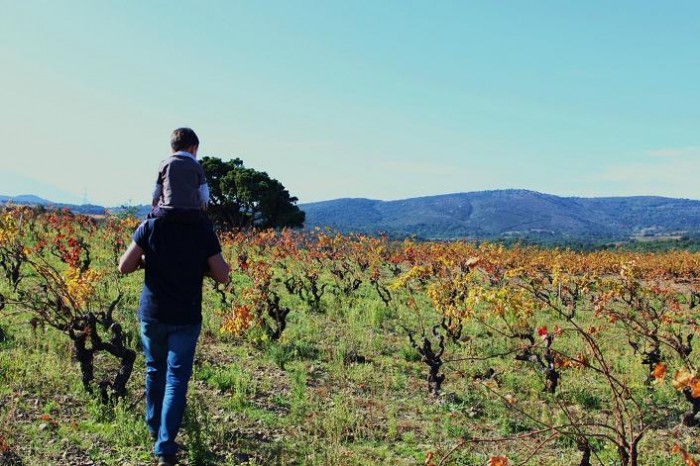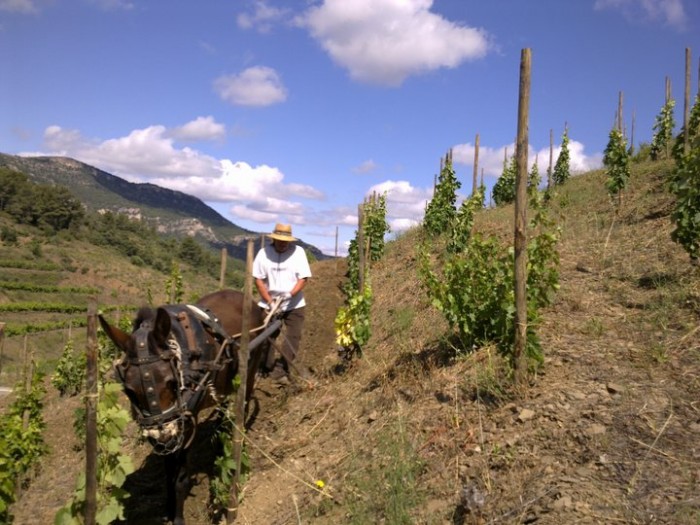Natural wine is not a trend; it is an ongoing commitment, by which I mean that growers do not perceive it as some quasi-philosophical movement to latch on to for the hell of it, but actively resolve to make wines in a way that drives all subsequent practice in their respective vineyards and wineries. A natural winemaker needs clear objectives, an intimate understanding of the processes of farming and winemaking and recognise that ongoing approaches need to be constantly challenged and refined. Some growers are prompted to change methods in the vineyard and winery because they have tasted a natural wine which they admire and wish to capture the spirit of the wine, whilst others are stimulated by the aesthetic, ethical or philosophical desire to make something which they regard as wholly authentic.

There are degrees of what might be described as natural – one grower’s natural wine may be another grower’s “super-natural” wine. Inconsistency and resistance to easy definition are natural wine’s most infuriating characteristic to the majority of critics. Wines are snapshots – different grapes, different terroirs, different blends, young vines, old vines, different vinifications with the wild yeasts and low sulphur adding to the danger. Things happen. Shit happens. Not for nothing are cuvees named L’Echappée Belle, Hurluberlu, Grain de Folie. Natural wines reflect the temperament of the growers and the wild yeasts themselves – restless, dynamic, edgy and unconstrained. Look at the extraordinary of different cuvees made by growers such as Puzelat, Courtois, Mosse and Robinot, something serious, something quaffable, something crazy…
What is the wine about? Imagine a cathedral lit with every light and line focused on the high altar. And on the altar, very reverently placed, intensely there, a stave of oak, a punnet of blackcurrants and the gospel according to Robert Parker. (with apologies to HG Wells)
I love these wines for the same reason that I adore simplicity. They speak directly like an emotion communicated simply in a poem or cleanly presented food conveying strong natural flavours (who cares about rough edges) or an intense piece of music that moves us on our pulses. Art that aims at high art, an aesthetic intending to inspire awe or devotion, may be admirable, but I don’t enjoy it on a visceral level; I don’t feel as if I am participating which is also why I’m not a fan of would-be architectural wines, painstakingly and preciously constructed in the winery, controlled, modulated, honed and toned. The wine is made as a means to end and that end is critical approbation, due respect which will inevitably command a certain price in the market. Most of us drink wine at the table, rather than on bended knee.
Eliminating risk helps to achieve consistency, but is that the point of making wine? Should the artist minimise inspiration (Picasso once said: “I don’t take drugs – I am drugs”) to please the broadest section of the general public or should he or she work passionately with the material in their field.

The first question the natural vigneron should pose him or herself is “what is the nature of my terroir?” Just as great grapes can be ruined by clumsy winemaking so low sulphur wines are irrelevant unless they are a continuation of an organic process begun in the vineyard. Thus a natural winemaker works not in monoculture, but in a varied landscape shared with nature. The vine is part of the landscape; it takes its signature from the landscape. Biodiversity is the key, the vineyard should be alive in every respect for here is where the language of the wine is primarily expressed.
The decision to use wild rather than cultured yeasts further determines whether a wine can be called natural. A natural fermentation with many different types of yeast will make the wine different every year because each yeast has different character and reacts and combines differently. For some winemakers this lack of certainty is a gamble and they use cultured yeasts to give controlled fermentations. Natural wines depend on not filtering out natural diversity; conventional wines profile desirable characteristics.
More contentious is the use (or non-use) of sulphur. According to advocates of no sulphur (such as Houillon) healthy viticulture enables the wine to create its own defence mechanism to bacterial spoilage. He admits, however, that not using sulphur is not a matter of dogma, it is a qualitative judgement, respecting the grapes. There are winemakers who do not have the wherewithal to make this leap to zero additions.
Having said that there is an element of uncertainty most natural winemakers are not swivel-eyed, hocus-pocus spouting fanatics leaving their wines in the capricious hands of nature. Wine does not always behave predictably, either in the winery, the bottle or the glass. As an extreme example the white and red wines of Cornelissen can pong to high Etna of sulphides, mercaptans and je ne sais quoi. Three or four days in an unstopped decanter, however, and the naughty whiffs disperse leaving a lovely, fresh wine. Although this is not always the way things work out, what does not kill the wine can actually make it stronger. The wine, like any living entity, may eventually find its unique natural balance.
The greatest wines need time to settle and you should not expect perfection from the moment you pull the cork. Aeration, the ideal temperature, the shape of the glass, are elements that shape the development of the wine and natural wines are no different in this regard. Reduction is a feature of many natural wines, but reductive winemaking is by no means exclusive to natural wine.
Those who attack natural wines do so on a number of fronts with curious assertions based on rank prejudice at the worst and poor information at the best. It is fine to claim that you don’t like a particular wine because it doesn’t conform to your particular taste, it is a different matter to lump disparate growers and their wines into a single group and dismiss that group unilaterally, and something else to use specious reasoning to reach that viewpoint.

